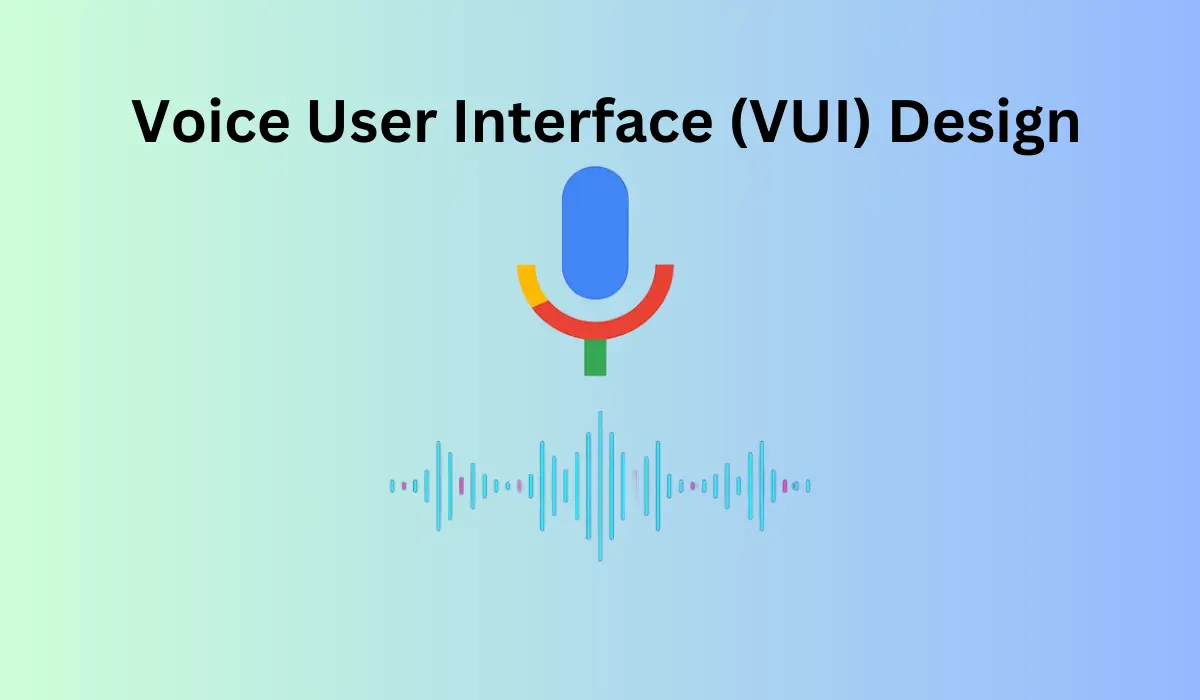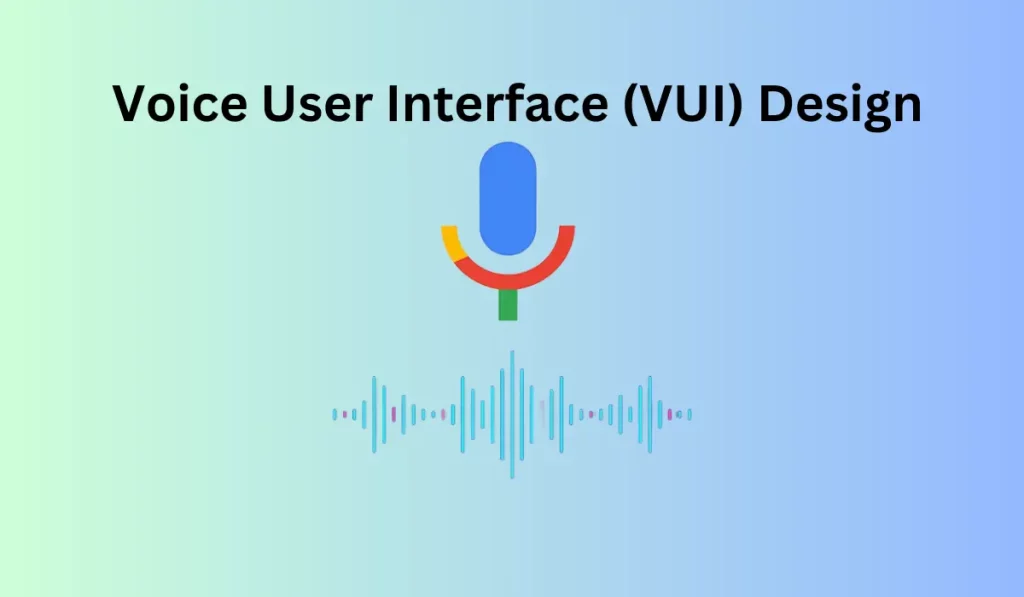In an era dominated by digital interactions, the way we engage with technology is constantly evolving. One of the most significant shifts in recent years has been the rise of Voice User Interfaces (VUIs), which allow users to interact with devices and applications using natural spoken language. From virtual assistants like Amazon Alexa and Google Assistant to voice-activated smart home devices and in-car infotainment systems, VUIs are transforming the way we interact with technology in our everyday lives. Behind this seamless interaction lies the art and science of voice user interface (VUI) design, which encompasses a myriad of considerations aimed at creating intuitive, engaging, and effective voice-based experiences.
Understanding Voice User Interface (VUI) Design:
Voice User Interface (VUI) design is a specialized field within user experience (UX) design that focuses on creating interfaces for voice-controlled devices and applications. Unlike traditional graphical user interfaces (GUIs), which rely on visual elements like buttons, menus, and icons, VUIs leverage speech recognition technology to interpret and respond to spoken commands and queries. VUI design involves designing the conversation flow, crafting natural language interactions, and optimizing the user experience for seamless voice-based interactions.
Advantages of Using Voice User Interface
Using Voice User Interface (VUI) offers a range of advantages for both users and businesses. Here are some of the key advantages:
Natural Interaction:
Voice commands enable users to interact with devices and applications using natural spoken language, mimicking human conversation. This natural interaction mode is intuitive and user-friendly, requiring minimal training or technical knowledge.
Accessibility:
VUIs provide a more accessible interface for users with disabilities or impairments that may hinder their ability to use traditional graphical user interfaces (GUIs). Voice commands allow users to navigate and interact with devices and applications hands-free, opening up opportunities for inclusion and accessibility.
Convenience:
Voice commands offer a convenient and hands-free way to perform tasks and access information, especially in situations where manual input is impractical or unsafe, such as while driving or cooking. Users can quickly and effortlessly control devices and access services using voice commands, enhancing convenience and productivity.
Efficiency:
Voice commands can streamline interactions and tasks by eliminating the need for manual input and navigation through complex menus and interfaces. Users can accomplish tasks more efficiently and quickly using voice commands, saving time and effort.
Multi-tasking:
VUIs enable users to multi-task and perform other activities while interacting with devices or applications using voice commands. For example, users can dictate messages while driving or cooking, allowing them to stay productive without having to stop what they’re doing.
Hands-free Operation:
VUIs are ideal for hands-free operation in situations where manual input is not feasible or practical, such as when using wearable devices or controlling smart home appliances. Users can control devices and access services using voice commands without having to physically interact with them.
Personalization:
VUIs can personalize interactions based on user preferences, behavior, and history of interactions. By learning from user inputs and adapting to their preferences over time, VUIs can deliver more relevant and personalized experiences tailored to individual users.
Integration with IoT Devices:
VUIs can seamlessly integrate with Internet of Things (IoT) devices, allowing users to control and interact with smart home appliances, wearable devices, and connected devices using voice commands. This integration enhances the functionality and usability of IoT devices, making them easier to control and manage.
Key Principles of VUI Design:
By following the below key principles, VUI designers can create intuitive, engaging, and effective voice-based experiences that delight users and enhance the overall usability of the interface.
Conversational Design:
VUIs should emulate natural human conversation, with clear prompts, responses, and feedback that guide users through interactions in a conversational manner. Designers should consider factors such as tone, pacing, and conversational context to create engaging and intuitive experiences.
Context Awareness:
Effective VUIs are context-aware, meaning they can understand and adapt to the user’s context, preferences, and history of interactions. Contextual cues help personalize the experience and anticipate user needs, enhancing usability and relevance.
Error Handling:
Anticipating and gracefully handling errors is crucial in VUI design. Clear error messages, prompts for clarification, and fallback options help users recover from misunderstandings or errors in their commands, ensuring a smooth and frustration-free experience.
Feedback and Confirmation:
Providing timely feedback and confirmation is essential for maintaining user confidence and trust in VUI interactions. Visual and auditory cues, such as confirmation messages or progress indicators, help users understand that their commands have been understood and executed successfully.
Simplicity and Clarity:
VUI interactions should be simple, concise, and easy to understand. Avoiding jargon, complex language, or ambiguous prompts ensures that users can interact with the system effortlessly, regardless of their level of familiarity with voice technology.
Challenges and Considerations in VUI Design:
Voice User Interface (VUI) design presents unique challenges and considerations that designers must address to create seamless and effective user experiences. Here are some of the key challenges and considerations in VUI design:
Ambiguity in Natural Language:
Natural language is inherently ambiguous, and speech recognition technology may struggle to accurately interpret user commands, especially in noisy environments or with users with diverse accents and speech patterns. Designers must anticipate and account for variability in speech to ensure accurate and reliable interactions.
Error Handling:
Errors are inevitable in VUI interactions, whether due to misinterpretation of commands, background noise, or technical limitations. Designers must implement robust error handling mechanisms, including clear error messages, prompts for clarification, and fallback options, to help users recover from misunderstandings or errors seamlessly.
Context Sensitivity:
Understanding and adapting to the user’s context, preferences, and history of interactions is crucial for creating personalized and relevant VUI experiences. However, capturing and maintaining context across multiple interactions can be challenging, requiring sophisticated algorithms and data processing capabilities.
Multimodal Interactions:
VUIs are often integrated with other input modalities, such as touchscreens or physical buttons, in multimodal devices. Designing seamless transitions between voice and other input methods while maintaining consistency and usability presents unique challenges for VUI designers.
Privacy and Security:
Voice interactions raise concerns about privacy and security, as sensitive information may be inadvertently shared or intercepted. Designers must implement privacy-enhancing features, such as voice recognition authentication and secure data transmission, to protect user privacy and data integrity.
Cultural and Linguistic Diversity:
VUIs must accommodate users from diverse cultural and linguistic backgrounds, each with their own idioms, expressions, and speech patterns. Designers must consider cultural sensitivities and language variations to ensure inclusivity and accessibility for all users.
Feedback and Confirmation:
Providing timely and informative feedback is essential for maintaining user confidence and trust in VUI interactions. However, finding the right balance between providing enough feedback without overwhelming the user can be challenging for designers.
Learning and Adaptation:
VUIs should be able to learn and adapt to user preferences and behavior over time, improving the accuracy and relevance of interactions. Designers must implement machine learning algorithms and adaptive models to continuously refine and optimize the VUI experience based on user feedback and usage patterns.
Also Read
The Future of VUI Design:
The future of Voice User Interface (VUI) design holds immense promise, driven by advancements in technology, changing user expectations, and the growing ubiquity of voice-enabled devices and applications. Here are some key trends and developments that are shaping the future of VUI design:
Natural Language Understanding (NLU) Improvements:
As speech recognition technology continues to advance, VUIs will become more adept at understanding natural language commands and context. Improved NLU capabilities will enable more nuanced and contextually relevant interactions, enhancing the overall user experience.
Personalization and Context Awareness:
Future VUIs will leverage machine learning algorithms and artificial intelligence to personalize interactions based on user preferences, behavior, and context. By learning from user inputs and adapting to their individual needs, VUIs will deliver more tailored and relevant experiences.
Multimodal Interfaces:
The future of VUI design will involve seamless integration with other input modalities, such as touchscreens, gestures, and augmented reality (AR) interfaces. Multimodal interfaces will enable users to interact with devices and applications using a combination of voice, touch, and gestures, providing a more versatile and intuitive user experience.
Emotional Intelligence:
Future VUIs may incorporate emotional intelligence capabilities to detect and respond to user emotions and sentiment. By analyzing vocal cues, tone of voice, and other non-verbal signals, VUIs can tailor responses and interactions to better meet users’ emotional needs and preferences.
Augmented Reality (AR) and Virtual Reality (VR) Integration:
VUIs will play a key role in augmented reality (AR) and virtual reality (VR) experiences, enabling users to interact with virtual environments and objects using natural language commands. VUIs integrated with AR and VR technologies will enhance immersion and interactivity in virtual worlds.
Cross-Platform Integration:
Future VUIs will seamlessly integrate across multiple platforms and devices, allowing users to access consistent and cohesive experiences across smartphones, smart speakers, wearable devices, and other connected devices. Cross-platform integration will enable users to transition seamlessly between different devices and environments.
Enhanced Security and Privacy:
As voice interactions become more prevalent, ensuring security and privacy will be paramount. Future VUIs will implement advanced security measures, such as voice biometrics and encryption, to protect user data and prevent unauthorized access.
Natural Language Generation (NLG):
In addition to understanding natural language commands, future VUIs may also incorporate natural language generation (NLG) capabilities to generate human-like responses. NLG technology will enable VUIs to engage in more sophisticated and contextually relevant conversations with users.
End Words
Voice User Interface (VUI) design represents a dynamic and evolving discipline at the intersection of technology, linguistics, and human psychology. By mastering the art and science of voice user interface design, designers can unlock the full potential of voice technology and pave the way for a more accessible, intuitive, and inclusive digital future.





